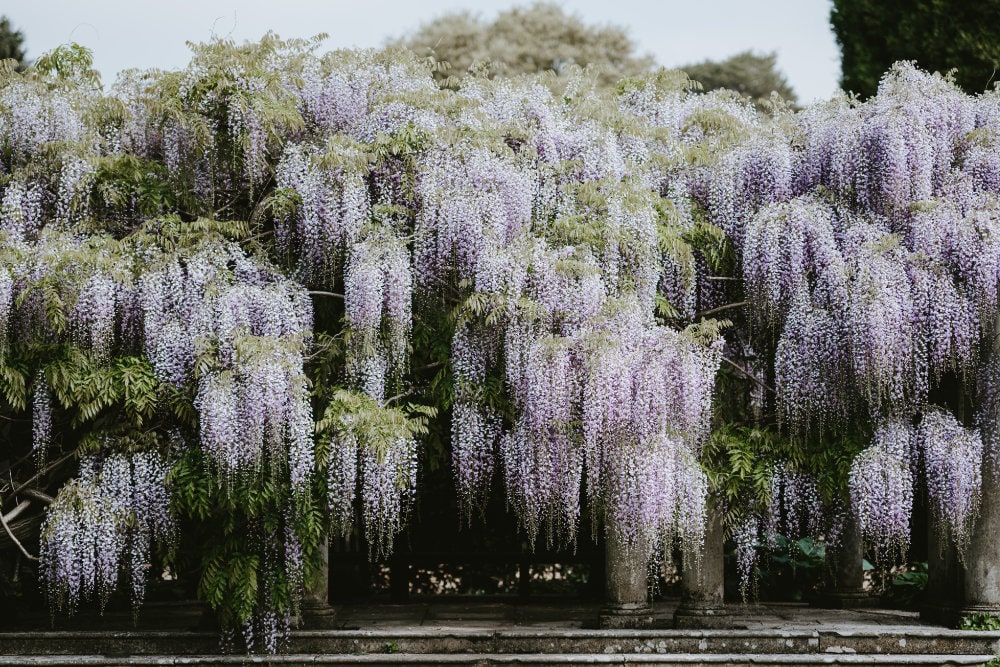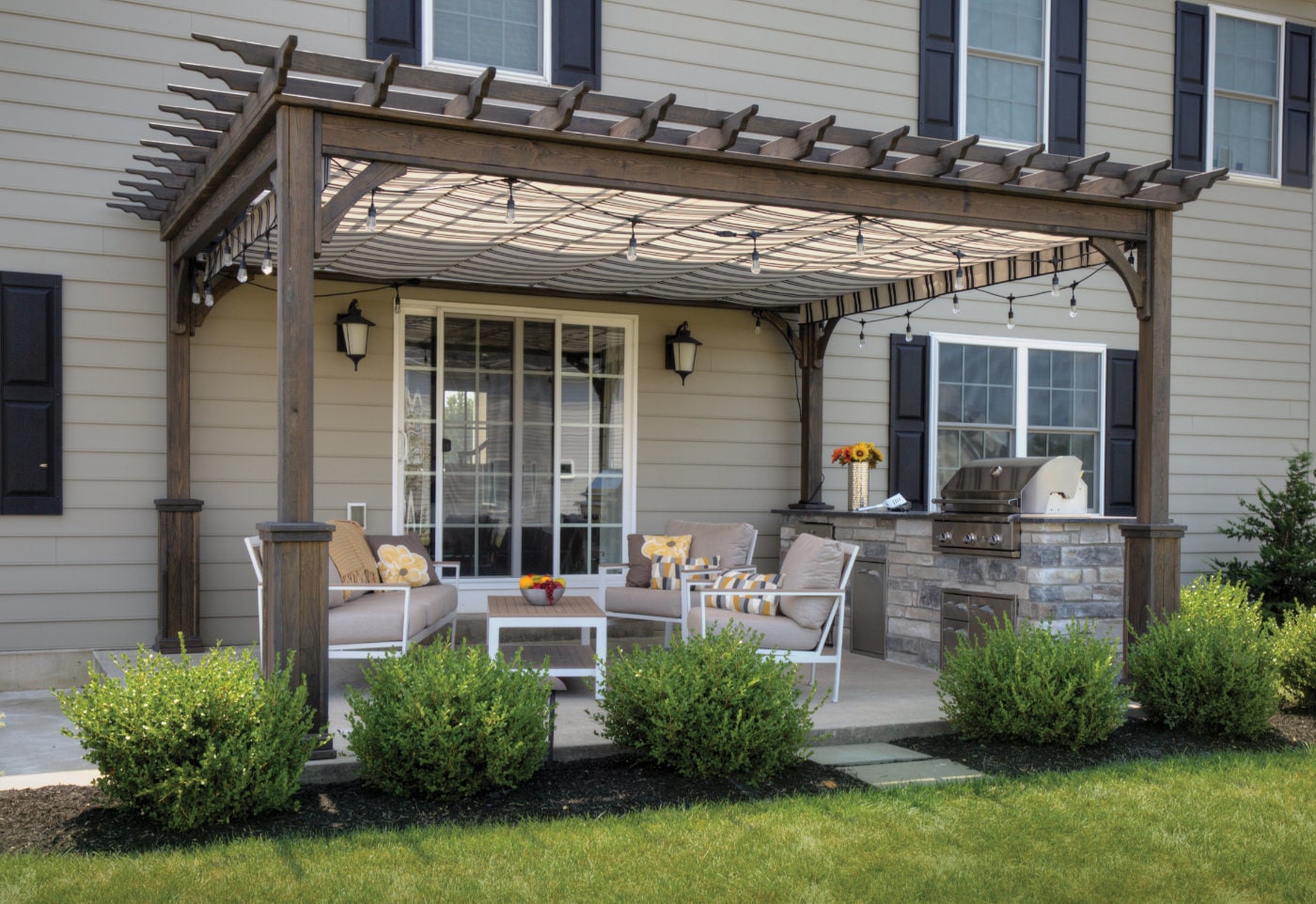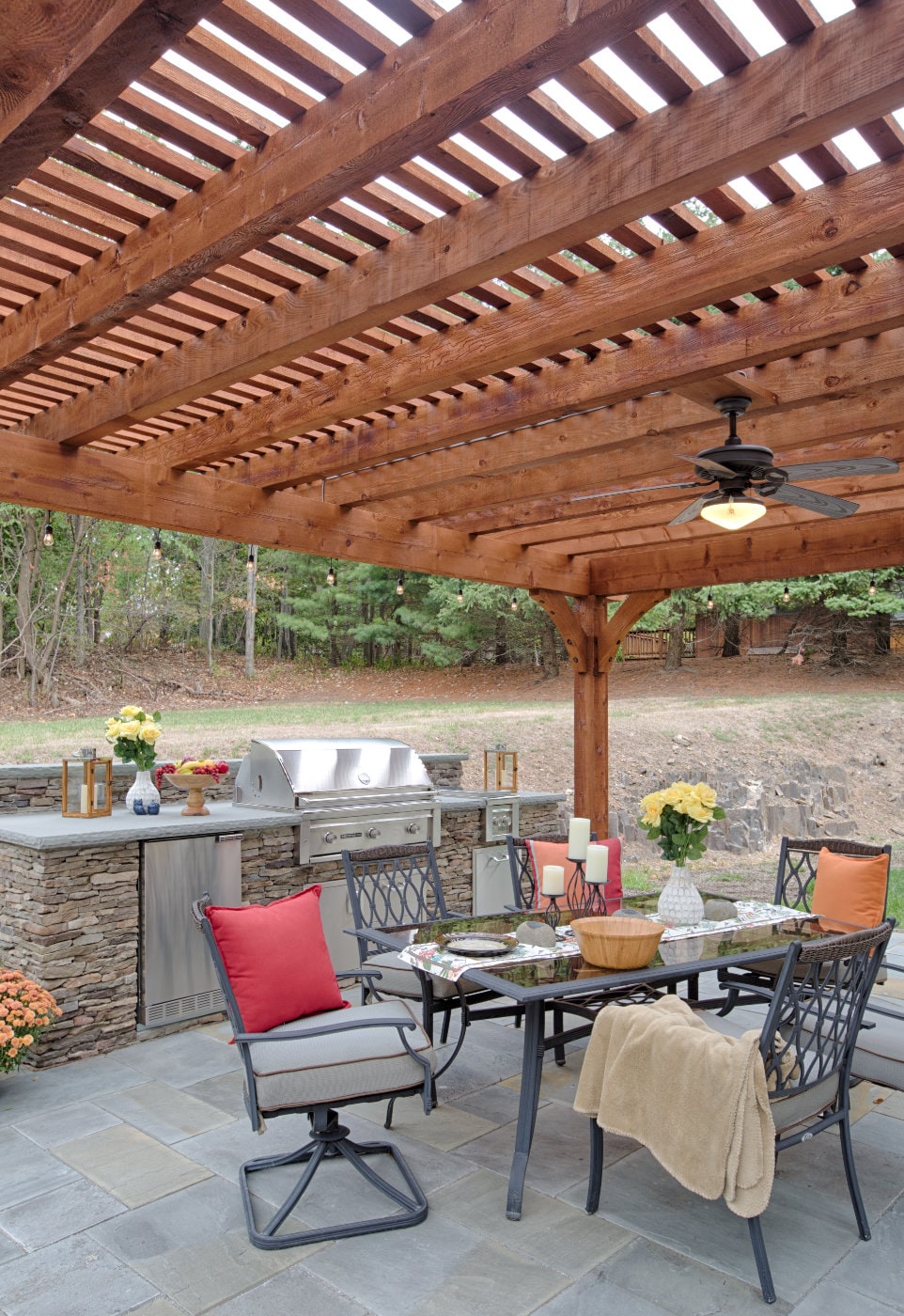How to Train Wisteria on a Pergola
Everything You Need to Know

With its iconic cascading blooms, wisteria is a breathtaking addition to any outdoor space. When trained onto a pergola, wisteria creates an even more enchanting touch that is sure to transport you into a fairytale wonderland.
Whether you're new to gardening or already a seasoned pro, wisteria training can be the perfect project for you to try. Fortunately, getting started is made easy with this guide by Backyard & Beyond.
So if you want to learn how to train wisteria on your pergola, then take a step toward creating your own peaceful oasis with us. Together we'll see just how easy it is to create something absolutely stunning by growing and training this treasured bloom on your pergola.
Does Wisteria grow well on pergolas?
Wisteria is a beautiful flowering vine that can make any outdoor space more magical. It grows easily on pergolas, trellises and stone walls as long as it has something to cling onto. Wisteria prefers well-drained soil with plenty of moisture, making it an ideal choice for a sunny pergola with a hose or water source nearby.
When planting wisteria on a pergola, be sure to leave enough room for the vine to spread and bloom. With some regular pruning to keep the growth in check, you can enjoy gorgeous wisteria blooms each year, showcasing your pergola's full potential and adding beauty to your garden — it's truly a sight to behold!
How can I train Wisteria to grow up my pergola?
Training a Wisteria vine up your pergola is no impossible task. In fact, give it a shot, and we're convinced you can furnish your backyard with some gorgeous pergola blooms. All you need is the right knowledge, materials and a bit of patience.
Firstly, it's important to select the right variety of Wisteria that will thrive in your area. You should also plan ahead by creating an appropriate trellis system — either lattice or vertical wires — on which you will be guiding the vine branches, otherwise they might become too heavy for your pergola to bear.
If you're growing a new plant from seed, patience is essential; otherwise, older plants will put up more rapid growth and flower sooner if they were trained when they were young.
When the ground is mostly dry in late winter, prune back all branches to two or three buds at each node before tying them onto the desired location on your pergola support structure. Over time, increase other methods of training, like defoliation, if needed, to ensure that your Wisteria vines grow vertically, simply, and gracefully along over your pergola for years to come!
How long does it take for wisteria to grow on a pergola?
Growing a wisteria takes some patience. On the lower side of the range, most gardeners report about two to three years for a wisteria to grow up and cover their pergola, while in more temperate climates, it can take up to seven years. In cooler northern climates, even longer waiting times may apply.
To properly cultivate this plant, it requires regular pruning and tying so that it winds horizontally across the pergola structure. With proper care and feeding though, this sumptuously scented addition can be just the crowning glory your outdoor living space craves!
How do you prune wisteria on a pergola?
Pruning a wisteria on a pergola is an important yearly task that helps to maintain the beauty of your landscape. To start, select only healthy shoots near the base of the wisteria, making sure to keep four or five for stability and growth. Then, tie each shoot to its respective frame or support with garden twine. This will train the plant as it begins its climb during the growing season.
Finally, make sure to prune shoots and any new growth throughout the flowering season, as this will help limit future maintenance. Following these steps will help ensure that your wisteria pergola is beautiful and healthy all year round.
Will wisteria damage my pergola?
If you are considering adding a splash of vibrant color to your outdoor structures with wisteria, it is important to consider how the vine may affect your pergola and the rest of your home.
Although wisteria can bring a beautiful and fragrant accent to your garden, it does need some attention and maintenance. If neglected, wisteria's vigorous growth can damage your pergola, as the vines are capable of threading and twisting around the structure's support beams. If planted too close to your home or underground pipes, wisteria roots can cause the same sort of damage.
Proper maintenance is key in ensuring that your pergola remains safe from any form of damage caused by the wisteria. Regular pruning of the vines and trimming off affected areas several times throughout each season is highly recommended. With this proper care, you can enjoy having a lush bloom of striking flowers gracing your pergola without putting its structure at risk.
What is the best wisteria species for pergolas?
When it comes to using wisteria to cover a pergola, there is no better option than Wisteria Floribunda, more commonly known as Japanese Wisteria. This variety is best known for its impressive long racemes, which provide an inimitable effect when draped over an outdoor structure such as a pergola.
There are few things more beautiful than rows of draping blossoms in shades of blue and purple adorning the smooth wood or stone of a pergola, creating an unforgettable sight year after year. As such, if you're looking for a vivid display that will last through the seasons, Wisteria Floribunda is your best bet.
Choose Your Pergola Carefully
When choosing a pergola to house wisteria vines, you need to ensure you invest in a sturdy, handmade pergola that will not only withstand the wisteria branches, but withstand harsh weather.

At Backyard and Beyond, our selection of pergolas offer an ideal way to bring charm to your outdoor space. Whether you prefer the traditional wooden option or prefer a virtually maintenance-free vinyl alternative, we provide plenty of options for quality construction and tailor them completely to your specifications.
To ensure the best results, our wood pergolas are made from solid laminated, pressure-treated pine wood, with scalloped ends and notched intersections contributing both visual appeal and extra stability. The vinyl option also starts from the same strong pressure-treated wood base before being given a durable white vinyl cover and additional decorative end caps. Whichever option you choose, you can rest assured that your pergola will be designed for easy care so that it can be enjoyed without worry by your family for years to come.
Time to Train Up Your Wisteria
After following these simple steps, and with a little bit of farmer-like patience, you will slowly but surely have a thriving and gorgeous wisteria vine growing up your pergola or arbor. Not only will it enhance the overall look of your backyard landscape; it will also add some extra privacy while providing shade during hot summer days!
Training wisteria on your pergola can seem intimidating at first, especially when growing them up a structure. However, with some patience and practice, anyone can get their wisterias growing in no time. By following these steps from Backyard & Beyond, you will be able to successfully train their own beautiful wisteria vines in no time! Just remember — the key is patience and attention!
Ready to get started on creating your perfect outdoor space? Browse our selection of pergolas today to find your newest backyard addition!


